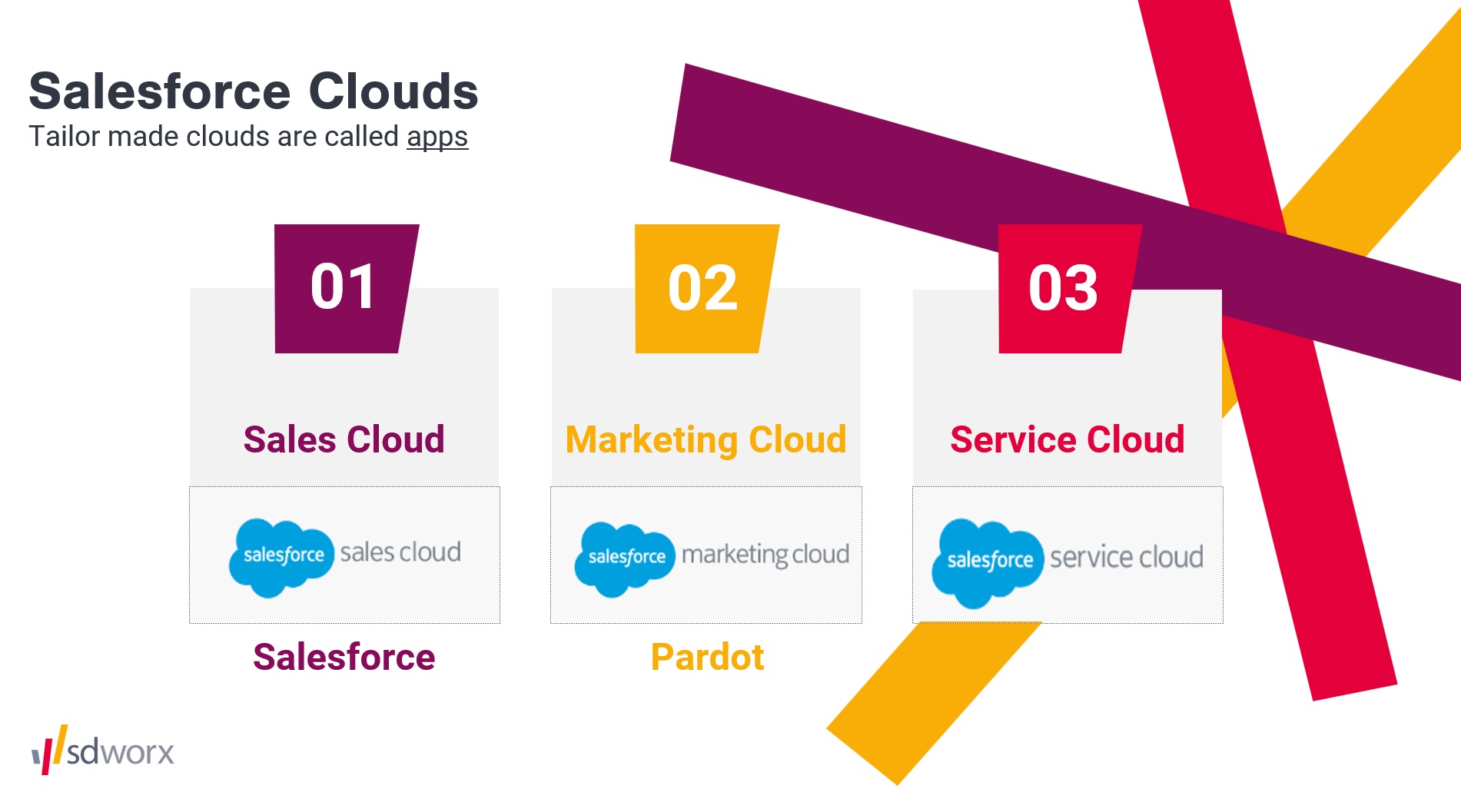Salesforce Online training for Marketeers
Welcome to our online course of the Salesforce app! In this session, we will explore the powerful features and functionalities of the Salesforce Sales App. Designed to streamline your sales processes…

Welcome to our online course of the Salesforce app! In this session, we will explore the powerful features and functionalities of the Salesforce Sales App.
Designed to streamline your sales processes, this app helps you manage your leads, opportunities, and customer interactions more efficiently. Whether you’re new to Salesforce or looking to enhance your skills, this training will provide you with the knowledge and tools to maximize your sales performance.
By the end of this training, you’ll be equipped to leverage the Salesforce Sales App to drive your sales success. Let’s get started and unlock the full potential of your sales capabilities!
In order to register your course completion, find the quiz link at the bottom of this page.
Section 1 - Understanding the salesforce cloud & apps
Before we get directly in to the usage of the app itself, there is couple of crucial points we have to have clear as clean water before moving forward:
The differentiation between cloud and app:
- Cloud is the package Salesforce will sell to their clients as a SaaS solution
- App is the final tailor made solution that the users will manage to achieve their goals
Having this understood, considering that the terminology shall not affect our knowledge and understanding of the processes, we shall move in to the theory of which apps are mainly used in the SD Worx environment:

- Service app (service cloud) :
- enhance customer experience and engagement.
- automates Business Processes and facilitates customer cases
- obtains real-time customer information
- Sales app (CRM / sales cloud) :
- designed to help organizations sell smarter & faster
- all customer/ prospect info in one place
- makes sales teams more productive
- Account Engagement app (formerly Pardot / marketing cloud)
- connects companies with every customer interaction
- experience across multiple different channels
- easy to control messaging flows & discover insights
Section 2 - Sales app overview
In this video, I provide a detailed walkthrough of the main overview in the Salesforce sales app. It explains how to navigate the interface, use the search bar effectively, and access various features like global actions and notifications.
I also highlight the importance of exploring different modules and views for a comprehensive understanding of the tool. Watch to learn how to optimize your first access to the app and understand quickly how to personalize your experience.
00:00 Introduction to Sales app
00:50 Main upper buttons
03:00 Navigation Items
06:30 Example of default view from items
Section 3 - Marketing Process
In this section we will describe the main marketing processes visually, take a look to the concepts that shall be clear before proceeding further in to the usage of the sales app:

lets describe the 4 first concepts we see on the top:
- A Lead is almost always a unidentified record of a person, coming from all sort of channels, where we qualify them if they are interesting for our database.
- Contact are also representations of individual people, however, they are qualified and organized under Account records.
- Accounts are representations of businesses that have a business relationship with SD Worx.
- An opportunity is a deal in progress, related to a contact and an account.
Channels, lead conversion and campaing membership as bigger picture
and if we talk about those channels that will populate this previously mentioned concepts, on a bigger picture, the actual layout we need to assimilate would be a resemblance of the image we can see below, that will display all the relevant objects that come in to play in such environment:

therefore all these concepts have to have a touchpoint to what we can all relate to, in order to do that they are link to each campaign via turning campaign members.
Gathering not only insights and marketing efforts but also any representation that holds a connection with a campaign/s.
Section 4 - Campaigns Hierarchy (Parent/Child) and how to create them
Salesforce Campaigns are design to track and manage marketing efforts, and to serve as a touchpoint for each of the representation of persons/companies that are related to these.
They allow you to organize and analyze the effectiveness of your marketing activities and their impact on your sales pipeline. Understanding the hierarchy of Salesforce Campaigns is crucial for leveraging their full potential.
This video will explain the typical hierarchy, which consists of parent and child campaigns, and how to create them through the menus of Salesforce Pardot & Sales apps, together with the complementary articles that describe how to properly name your assets and campaigns within the salesforce environment.
00:00 Introduction
02:27 Hierarchy Explanation
05:21 Building a Parent Campaign
10:14 Building a Child Campaign
13:12 Final Recommendations and Tips
please find below additional articles that will ensure you set your new campaigns without incurring in to mistakes:
- Naming convention Campaigns & Assets - MarTech Academy
- Marketing Campaigns - Overview / Parent / Child / How to create them - MarTech Academy
- Best Practices - MarTech Academy
Section 4 - PowerBI Campaign Dashboards
Section 5 - GDPR for Marketing - Consent
In this section we will study the importance of understanding how the Marketing consent rules must be assimilated before proceeding carelessly in to releasing communication.
What is exactly consent?
Consent has to be a freely given, specific, informed and unambiguous indication of the data subject’s wish - can be an (oral) statement, or a clear, affirmative action, 3 example types here:
- Ticking checkbox on a form where you ask consent for a specific purpose
- Prospect who leaves you with his/her business card at a commercial or network event
- A website visitor who clicks ‘accept all cookies’ on the cookie banner
Can we send marketing emails without consent ?
no commercial e-mail without a prior (explicit) consent.
- Exception: Existing customers can be emailed for surveys, events and specific commercial offers based on our legitimate interest (they can always ‘opt out’) about similar services
- We can email if the topics are service or operational, e.g.: Information about price indexations, downtime applications…
see a deeply detailed article about this topic in the link below:
- GDPR for Marketing - Consent - MarTech Academy
3rd Party Data
In the case of the third parties the conditions to be followed rely always in to obtain certain contracts in advance to prevent the misuses of the data from external databases or brokers, see a proper example of this with the 2 most common questions:
Can we still email on external databases /data brokers?
- Only if the data is obtained according to GDPR (with specific consent to be shared with SD Worx for commercial use), if the broker can evidence this, and if appropriate contractual arrangements are in place.
Can we share personal data with external parties who will provide services to us?
- Yes, we can do this, but only when they agreed and signed our supplier Data Processing Agreement (DPA) and appropriate contract
if you would like to deep dive in to this topic, don´t hesitate to check this article listed below:
- GDPR for Marketing - Third parties - MarTech Academy
Final Section - Salesforce Online training knowledge test
Welcome to the Quiz Challenge!
Get ready to test your knowledge with our 20-question quiz. To pass, you’ll need to score at least 75% of correct answers. You have 1 attempt to achieve this, so we recommend leaving the quiz (closing the tab) and come back to the course content in case of feeling doubtful. Since if the countdown timer reaches 0:00, your progress will be blocked and submitted automatically.
If you don’t pass within this attempt, do not panic, there is no mayor repercussion, although you’ll be automatically added to our future live training session based on your preferences picked at the initial form.
This is the end of the Salesforce Online training! please do let us know how useful did you see the training for your future goals, and don´t hesitate to give us feedback about what could be improved by filling in this 2min survey!
Online Salesforce sales app training feedback survey
Thank you all, enjoy your acquired knowledge on Salesforce, and come back to us if you have any trouble!
How did we do?
Training for our marketing technology & processes
Our Marketing Technology stack
